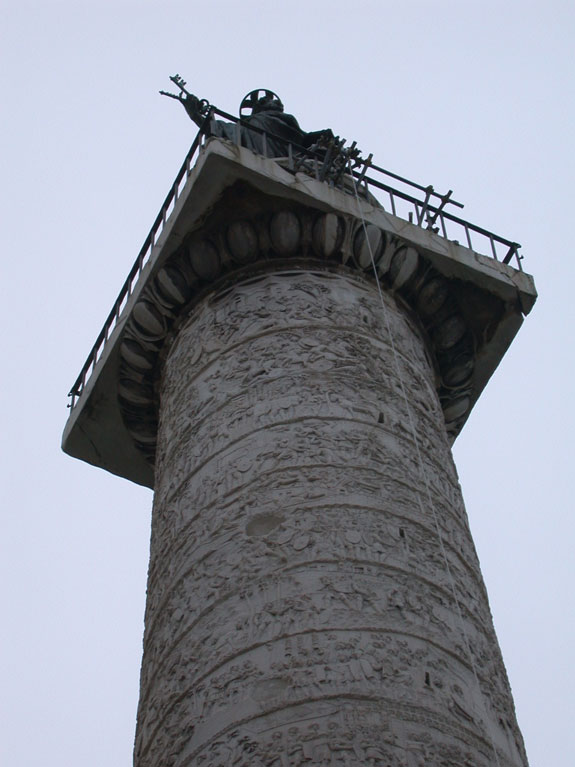|
|
|
|
|
|


Trajan Column - Symbolism
The Column commemorates Trajan's successes, but it does this without making him seem superhuman in scale (like the river god of the Danube).
-Trajan personally led the campaigns and appears frequently in the reliefs, but it is through his own gestures or the gazes of his men that one can pinpoint him initially in any episode.
-He remains the human leader of the Roman army, dominating the scenes only by virtue of his continual presence.
-The Column reliefs do not represent an apotheosis (deification or epitome) of the emperor in the manner that the reliefs from the Arch of Titus set that emperor apart from a purely human world.
- The sculptor was interested primarily in making the essential facts of the story clear. He achieved this not only by using a series of themes for both campaigns, and by making the figure of Trajan act as a momentary focal point in the continuous narration, but also by adopting a variety of perspectives that allow him to present activities both inside and outside a camp or a town at the same time.
- So both horizontal (or frontal) and 'bird's-eye' perspective are combined for clarity's sake, however illogical it may appear to the modern viewer.
Lower Bands of the Column-west side
River God Danuvius watching legionaries crossing a pontoon bridge. Note the holes to let light into staircase.
4th band Trajan in the centre receives an embassy from the Dacians after the first battle
3rd band cavalry and infantry prepare to set out from camp
2nd band of a Roman camp, supervised by Trajan far right.
1st band shows the Roman army leaving a city across a bridge of boats, watched by the River God Danuvius.

|
|
|
|